Back in the early days of search engine optimization and digital content creation, the term “above the fold” used to be used quite a bit.
Above the fold refers to content that appears near the top of your web page or blog. This is the content that the user can see without having to scroll down. The amount of content above the fold varies from site to site and across different devices. The importance of content above the fold was highly prioritized by search engines when it comes to SEO Rankings, meaning that you had to have all the relevant content above the fold for your post to rank well.
However, as technology has continued to evolve, so had Google’s requirements regarding the importance of content above the fold. Before diving into the SEO benefits of the content above the fold, it’s important to understand where Google stands on the topic.
Google’s Thoughts on Above the Fold Content
Google has made it clear that content above the fold isn’t as important as it used to be. In fact, during the Google SEO Office Hours on May 7, 2021, Google’s John Mueller addressed the topic of above the fold content and whether or not they prioritize content above the fold like they once did.
When a user asked whether Google preferred content above or below the fold, Mueller replied with, “I don’t think we have any strong preferences.” This means that content placement doesn’t carry the weight that it once did before AI and language learning.
What he did say, however, is that they do want to see some content above the fold. Websites that have large headers that take up a great majority of a screen and cut out most of the content would be considered “problematic.”
Remember, Google’s guidelines specify that they want to rank user-friendly, easily accessible sites and provide searchers with real value. If they have to scroll down your page too much before they get anything of value, then this can hurt your overall ranking.
What are the SEO Benefits of Content Above the Fold?
When it comes to SEO, the content above the fold is essential for several different reasons. While Google may not prioritize it as much as it used to, it can still have a significant impact on a website’s overall success. Here’s why:
Where Your Content Falls Determines How Long Your Audience Stays on Your Page
When it comes to getting a viewer to stay on your site, the content above the fold can play a huge part in how long they stay. It’s essential to keep your audience engaged and ensure that they stay on your site as long as possible. The more time someone spends on your site, the more likely they are to become engaged with your brand and return to your website in the future.
It Helps with User Experience
User experience is extremely important as far as SEO is concerned. If your site has a good user experience, then you will have an easier time convincing a user to share your site with others. This will lead to more traffic and more conversions.
The content above the fold plays a huge role in this experience. If your users have to scroll down the page to see anything of value, then they are more likely to bounce. This will negatively affect your overall conversion rates.
Also, within that content remember to utilize calls to action that direct users to where you would like them to go along your conversion funnel. If they have to scroll too far to find a call to action it is likely they will not see it therefore, missing the opportunity to covert. And we all know that at the end of the day conversions matter.
It Helps You Get More Social Shares
Social media is a huge part of any business’s online marketing strategy. The more shares you get from your content, the more it will be seen by your target audience. Having content above the fold will make it easy for people to share, and it will make it more likely for people to actually see your content.
Another benefit of having content above the fold is that when shared on many social media platforms, such as Facebook, a small snippet of the content will be automatically included. Most of the people who share your content won’t take the time to edit the snippet that shows when they hit the “share” button. You want to make sure you include relevant information in that snippet for them.
Find Your Content Sweet Spot with CadenceSEO
When it comes time to determine where your most important content should fall, it can be quite the toss-up. Instead of leaving it up to chance, let CadenceSEO help.
Our SEO experts and web designers can help you create a website that looks great, is easy to navigate, and contains all the content that your users are looking for.






